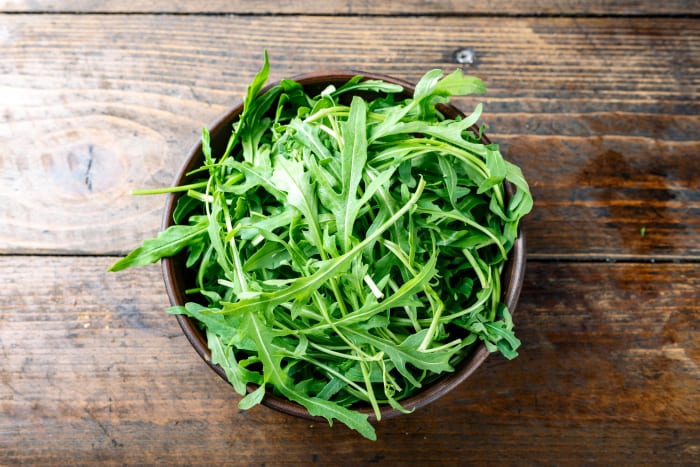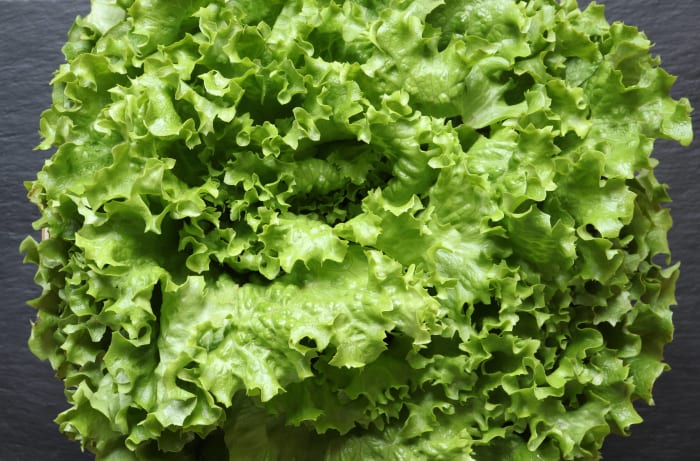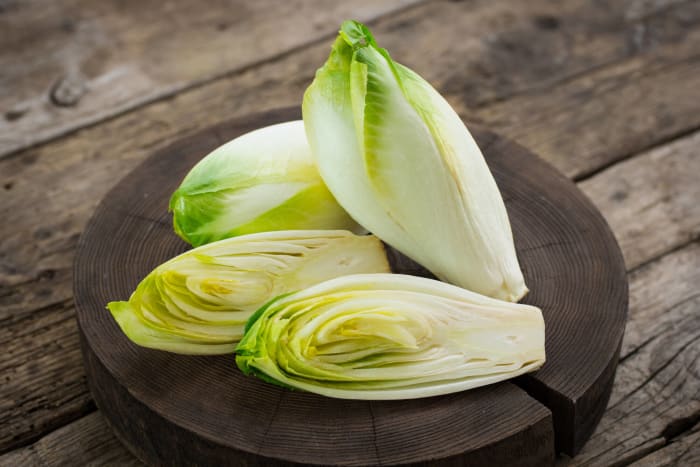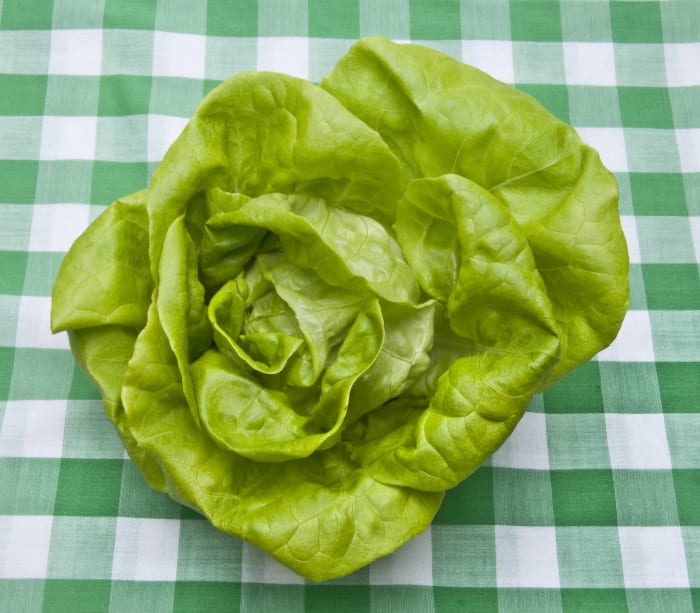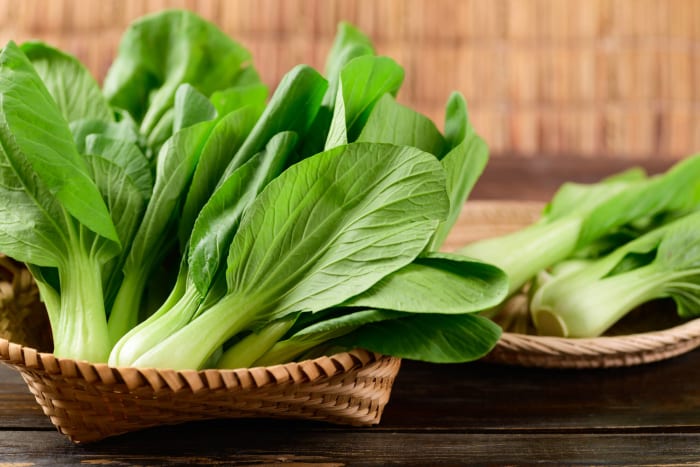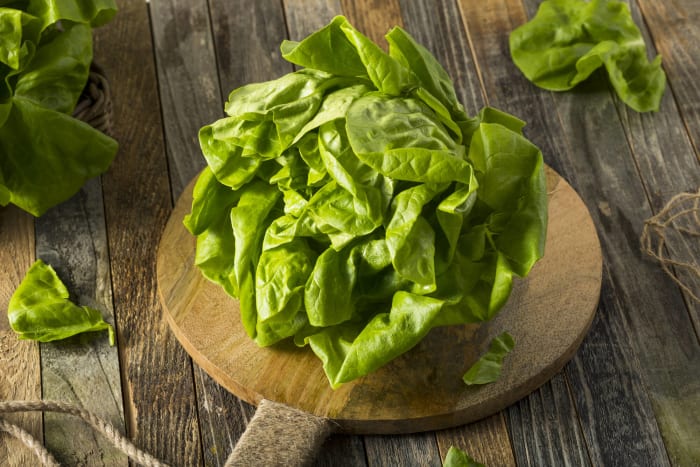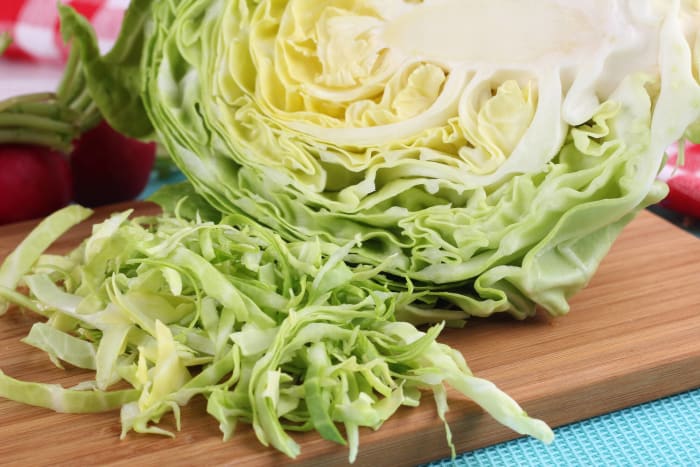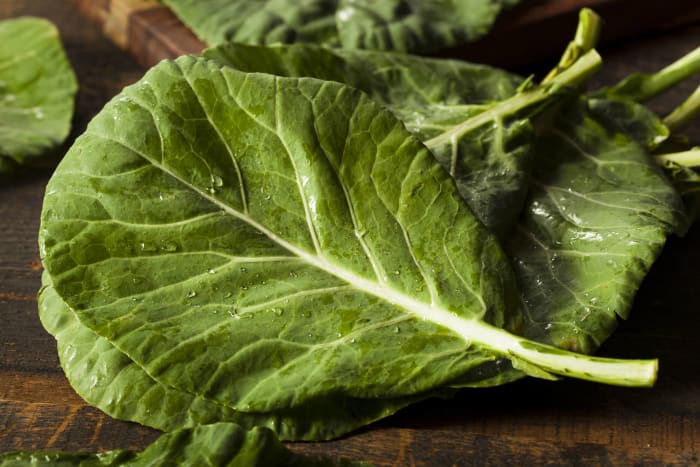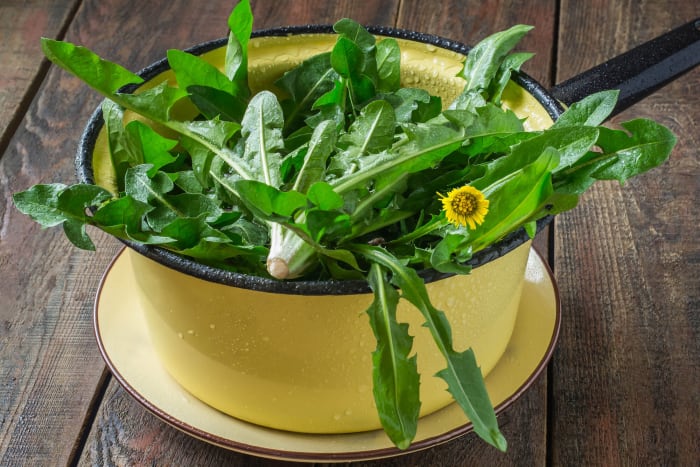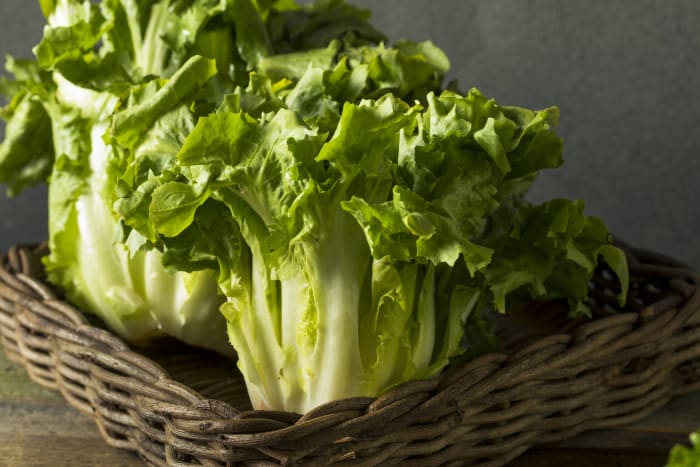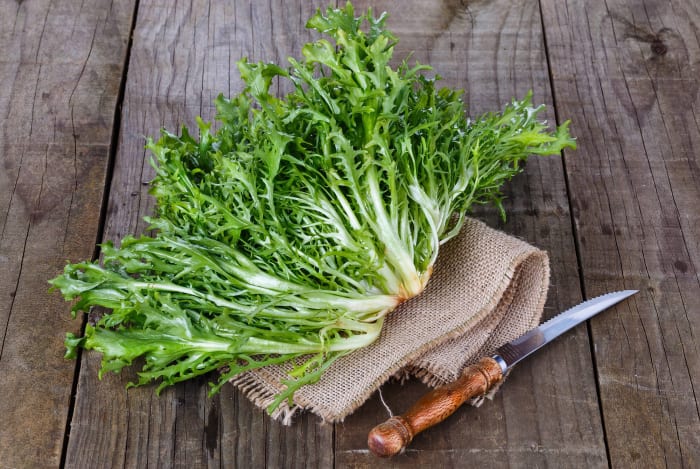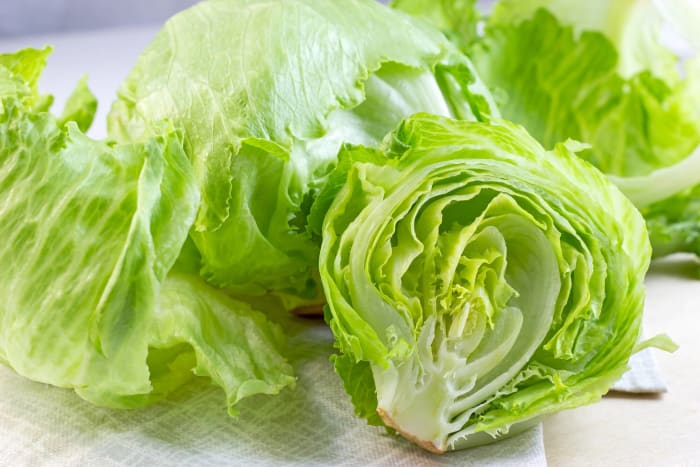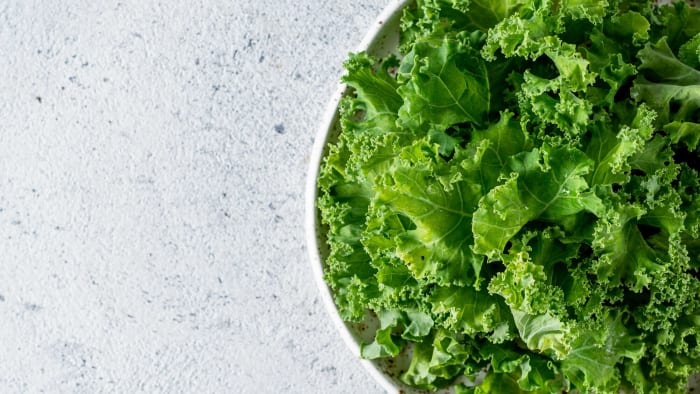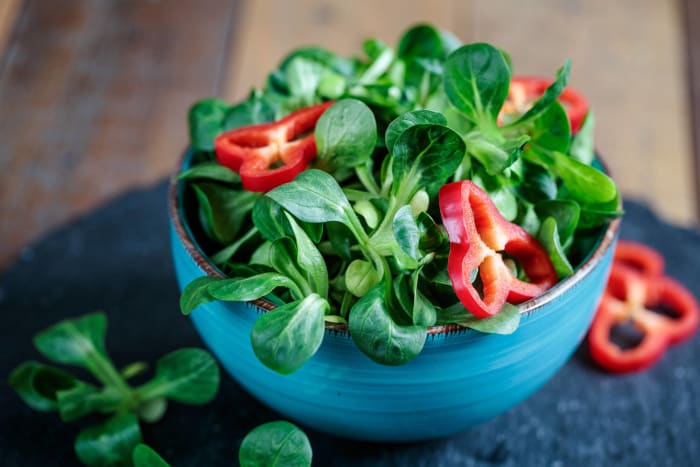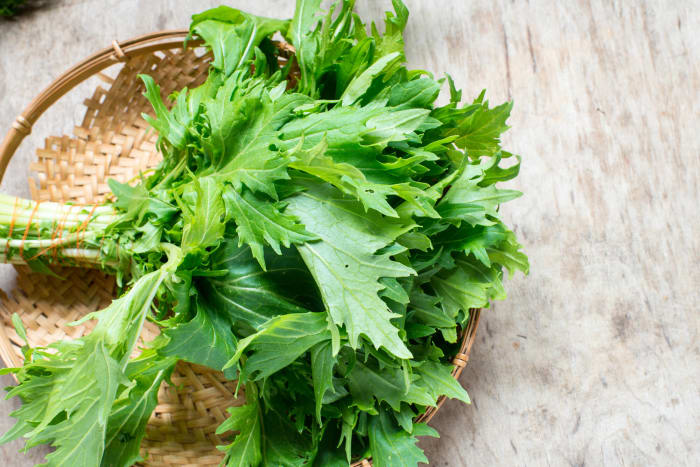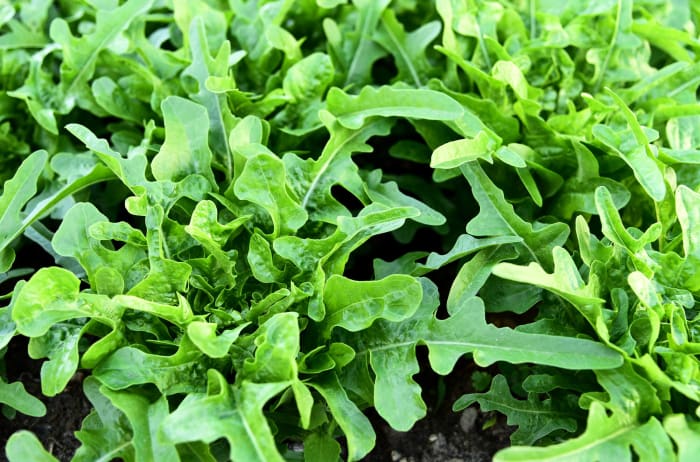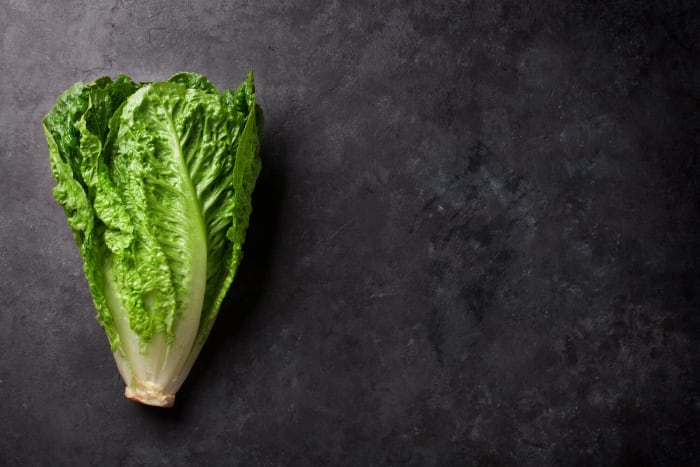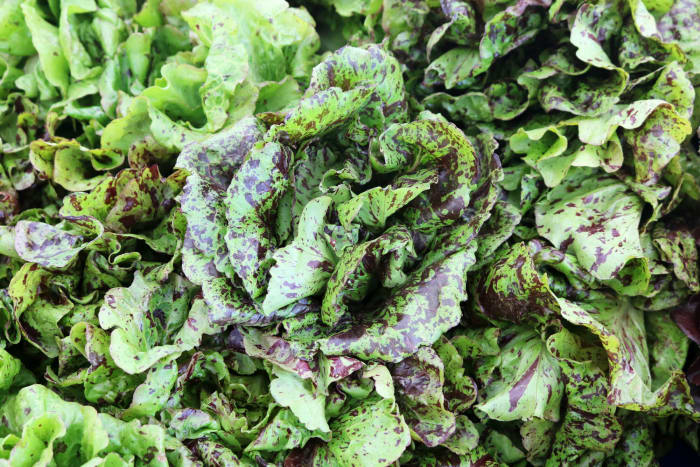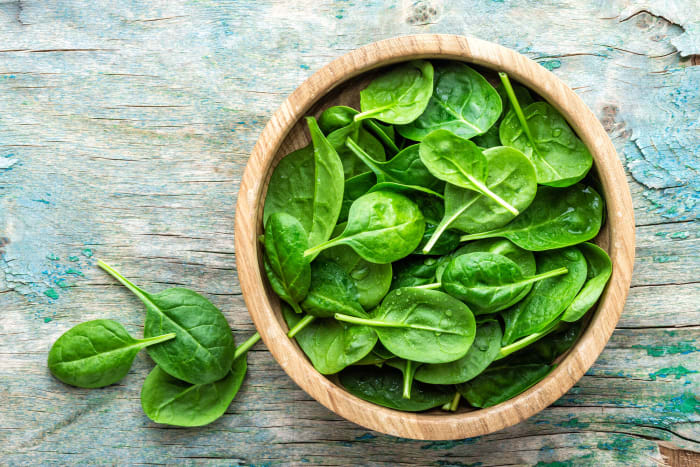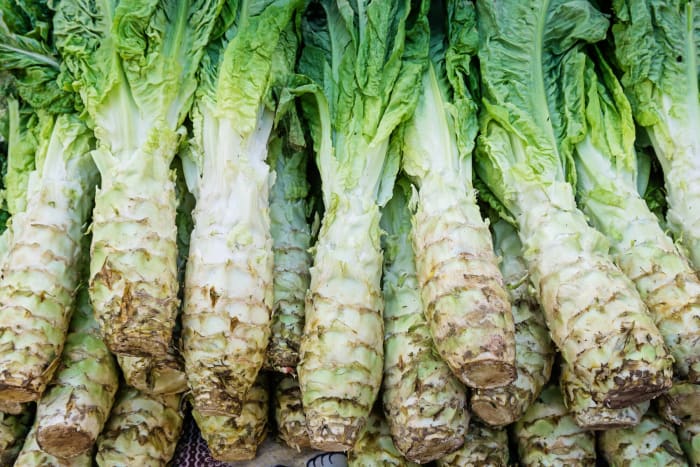Salads seem so boring to some people, probably because the base of nearly every salad is a bed of greens. But that doesn’t mean your options are limited to classic greens like iceberg lettuce, romaine, and spinach (although we love all three of those). There are dozens of options out there when it comes to greens, and that’s just the actual green-colored ones, which are the focus of this article. (You won’t see any red leaf lettuce here — that would be radicchio!) Here are 24 types of greens for your next salad.
Shyripa Alexandr / Shutterstock.com
Also known as rocket, this leafy green is notable for its peppery, slightly tart flavor. High in both calcium and vitamin K, arugula can provide the base for a salad just as easily as it can be added to a sandwich or a soup.
Cala Mitysyl / Shutterstock.com
This summer green is perfect for summer salads as it has a crisp and juicy texture with a sweet taste. On the salad spectrum, it falls somewhere between iceberg and romaine. You may also see it sold as French crisp or summer crisp lettuce.
pilipphoto / Shutterstock.com
Belgian endive is identifiable by their broad, light-colored leaves. It is crisp and bitter when raw, so keep this in mind for any salads you make. When cooked, however, the endive's texture and flavor are transformed into a softer, sweeter, and slightly nuttier green. Belgian endive is also known as witloof or “white leaf.”
Brooke Becker / Shutterstock.com
One of two primary varieties of butter or butterhead lettuce, bibb lettuce has large, soft, light green leaves — making it a dependable option for salads and anything that requires a lettuce cup or wrap. With salad, select a light dressing that won’t weigh down the leaves.
Nungning20 / Shutterstock.com
This Chinese cabbage variety is versatile! The most common use might be in a stir fry, but it can also be grilled, braised, roasted, or used in soup or salad. If you’re going the last route, pair the less bitter baby bok choy with noodles, red bell pepper, and a sesame soy sauce dressing.
Brent Hofacker / Shutterstock.com
Like bibb, Boston lettuce is another butterhead variety, both of which are also known as “round lettuce” in the United Kingdom. Although they look very similar, Boston leaves are even larger, softer, and sweeter. Because the leaves are a little lighter in color, they taste milder.
Cozy Home / Shutterstock.com
A close relative of broccoli and cauliflower, cabbage boasts similar benefits, like high levels of vitamin C, vitamin K, and fiber. However, cabbage lends itself better to salad, even though it’s known better for its starring role in coleslaw and other slaws.
N. Mitchell / Shutterstock.com
Chard, a.k.a. Swiss chard, is most commonly seen as a side dish to steak — at least in our personal experience! Of course, that doesn’t mean it can’t be served sans meat or in a salad. For the latter, combine chard with feta or goat cheese, cherry tomatoes, chickpeas, and a lemon-olive oil dressing.
Brent Hofacker / Shutterstock.com
Collard greens are most commonly associated with a Southern side dish in which they are cooked in chicken broth with ham hocks, onion, vinegar, and salt & pepper. But there’s no rule saying they can’t be eaten raw — in fact, these bitter, earthy greens are exceptionally tasty when mixed up with fruits and veggies like cherry tomatoes, bell peppers, and peaches, as well as salty cheeses like feta or blue cheese. (You’ll still want to invite vinegar to this party, though!)
rukawajung / Shutterstock.com
Coral lettuce is notable for a mild flavor that boasts a hint of bitterness, as well as its frilly, coral-like leaves — hence the name. (But don’t confuse it with lettuce coral…you definitely don’t want to put that marine invertebrate in your salad.) Coral lettuce can be green or red, and is so appealing to the eyes that sometimes it’s just used for its aesthetic value, which is why you may find it on a burger or sandwich.
11 of 24
Dandelion greens
13Smile / Shutterstock.com
Dandelions are so much more than just a pesky, prevalent weed — they’re actually edible! In fact, we’ve eaten salads made from the leaves and drank beer made from the flowers. (The stems and roots can be consumed, too!) The leaves have a tangy, slightly bitter taste that is balanced well by the flavors of salt, lemon, and olive oil…or all three.
Brent Hofacker / Shutterstock.com
A member of the endive family, escarole is differentiated by its broad, pale, curved leaves that feature a milder flavor than other endive varieties. The inner leaves are the least bitter part of this plant, so opt for those in your next salad.
Yulia von Eisenstein / Shutterstock.com
Also known as curly endive, frisée is a fine option for salads when you’re seeking a subtle bitterness, although the lighter-colored inner leaves have a slight sweetness to them. Frisée is also useful for adding a feathery, crunchy texture to otherwise ordinary salads, sandwiches, and sides. For salads, try pairing it with something salty like bacon or pancetta.
KatMoy / Shutterstock.com
Iceberg lettuce catches some flak for being too plain, too ordinary, and not as nutrient-dense as other leafy greens — so consider this a little lettuce love letter. We crave the crunch of iceberg in salads (especially wedge salads). We salivate over shredded iceberg in tacos. And we admire its ability to top a burger, fill out (or stand in for) a wrap, or double as a cup. Even folks who don’t have a particular affinity for leafy veggies see iceberg as a go-to green, and that’s worth celebrating.
Fascinadora / Shutterstock.com
Many of us are old enough to remember that kale — the much-adored superfood — used to be relegated to the role of a garnish. But somewhere in the late 1990s or early 2000s, kale went through a revolution that saw its popularity surge as an incredibly healthy soup, side dish, or salad ingredient. It now also acts as a salty alternative to potato chips, a nutrient boost for smoothies, and a stand-in for spinach in many recipes.
Moving Moment / Shutterstock.com
True to their name, little gem lettuce heads are quite small (about 4-6 inches across), and they resemble miniature romaine hearts. The texture makes them an alternative to romaine, but their sweeter taste is more akin to butterhead varieties. This versatility means you can utilize little gem lettuce to your liking!
Nailia Schwarz / Shutterstock.com
Haven’t heard of mâche? Maybe you know it by another name, like corn salad, field salad, lamb’s lettuce, or nut lettuce. As the last name suggests, mâche has a nutty flavor as well as a tender texture and dark green hue that will complement nearly any salad.
natalia bulatova / Shutterstock.com
Jagged leaves define this dark, leafy green that features a peppery taste similar to arugula and a semi-bitter taste reminiscent of frisée. However, mizuna is milder than both of these other veggies, making this Japanese mustard green a solid candidate for a salad. Soy sauce, lemon, vinegar, and both sesame and olive oils play well with mizuna, making it as welcome in a Greek salad as it is in an Asian-inspired one.
19 of 24
Oak leaf lettuce
PosiNote / Shutterstock.com
In our opinion, oak leaf is one of the most underrated greens. Its deeply lobed leaves could be mistaken for other lettuce varieties, but bite into a bunch and you’ll be greeted with a buttery texture and mellow, sweet, and nutty flavors that complement nearly any meal, including salads. Although it’s one of our favorite greens, its red leaf variety is also especially tasty.
Evgeny Karandaev / Shutterstock.com
If you’re making a Caesar salad, we’re willing to bet you’re already planning to use romaine lettuce. However, the crisp and slightly bitter romaine leaves lend themselves to nearly any salad. (Don’t forget: a Cobb salad is also made with romaine!) We especially enjoy how crunchy romaine pairs well with the crispiness of ingredients like fried chicken (in a buffalo chicken salad) as well as softer ingredients like fruit (in a summer salad). You can also try grilling this green!
21 of 24
Speckled lettuce
Josiah True / Shutterstock.com
No, we’re not talking about lettuce that’s starting to go bad, but instead, a variety of heirloom lettuce that’s also known as spotted/speckled trout back lettuce or Forellenschluss lettuce. These thick greens can add some substance to your next salad, as well as a splash of color courtesy of the burgundy markings that dot every leaf. Flavor-wise, speckled lettuce is earthy with a kick of pepper.
Sunny Forest / Shutterstock.com
We’re sure you already know the rundown when it comes to spinach. It is generally mild in taste, even a bit sweet, but it can also be bitter, especially when overcooked. (And it shrivels up considerably when heated.) Of course, it’s also a superfood that’s loaded with antioxidants and nutrients like vitamin A, vitamin C, magnesium, calcium, and iron.
Emily Li / Shutterstock.com
You might know this lettuce by another name (or two!), including asparagus lettuce, celery lettuce, celtuce, or Chinese lettuce, with the latter name as a nod to its immense popularity in the People’s Republic. Although it might look like the leaves are the food portion, the whole thing is edible, and the stem is actually the best part. Just peel (with a paring knife or vegetable peeler) until you get to the tender inner flesh, julienne the insides, drain the liquid, and serve it topped with cooked scallions. It has a mild flavor with some subtle nuttiness and/or smokiness.
Vicky25 / Shutterstock.com
Despite a lack of resemblance, watercress is actually in the cabbage family — and like cabbage, it can contribute to a creative and tasty salad. Raw watercress tastes mild, fresh, and slightly peppery, providing a pinch of flavor that is complemented by the likes of everything from avocado, bell peppers, and cucumber to orange, pear, and sweet potato.
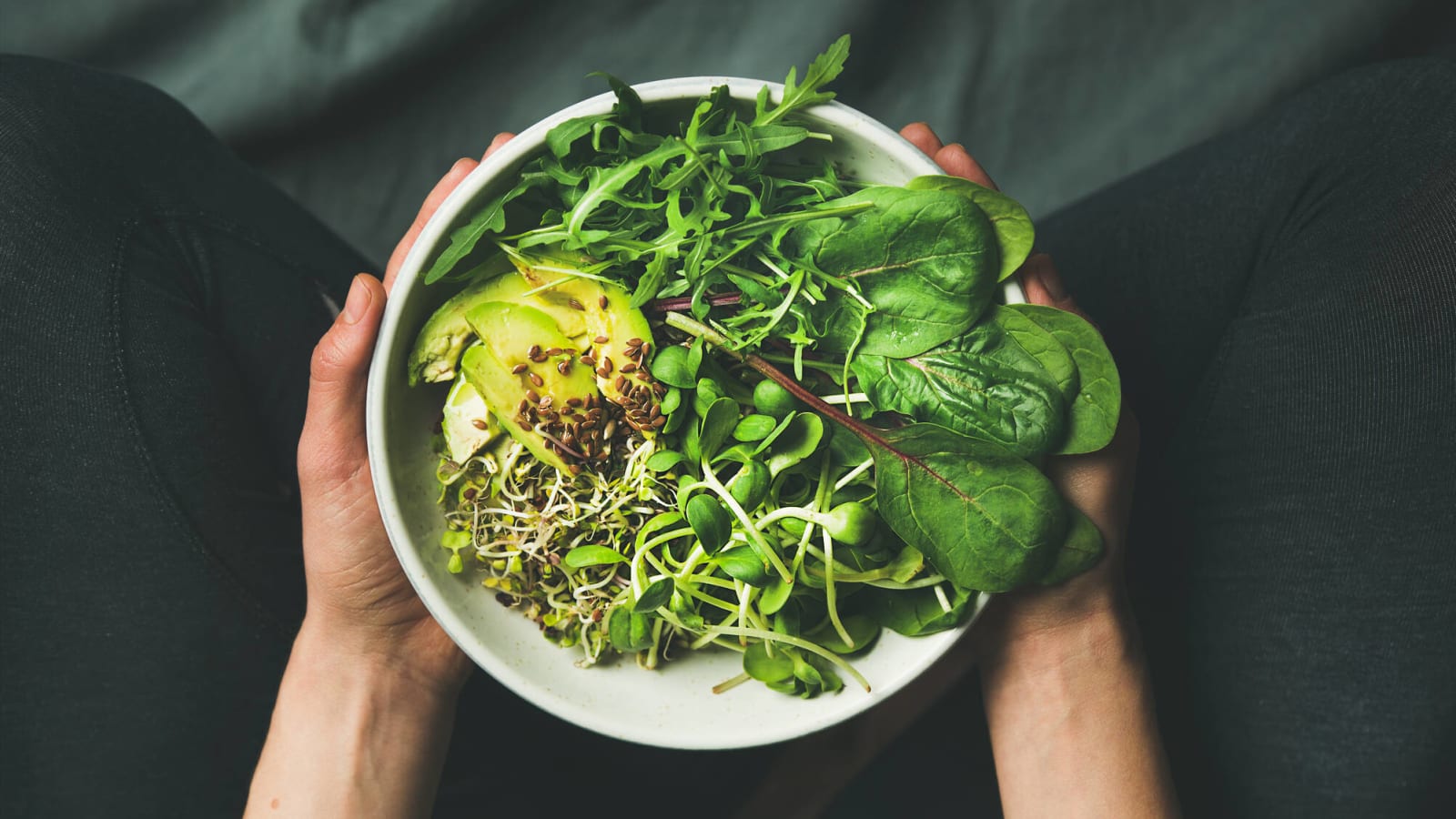
 +
+
